J32B SE-RMD, SE-RME, SE-RMF
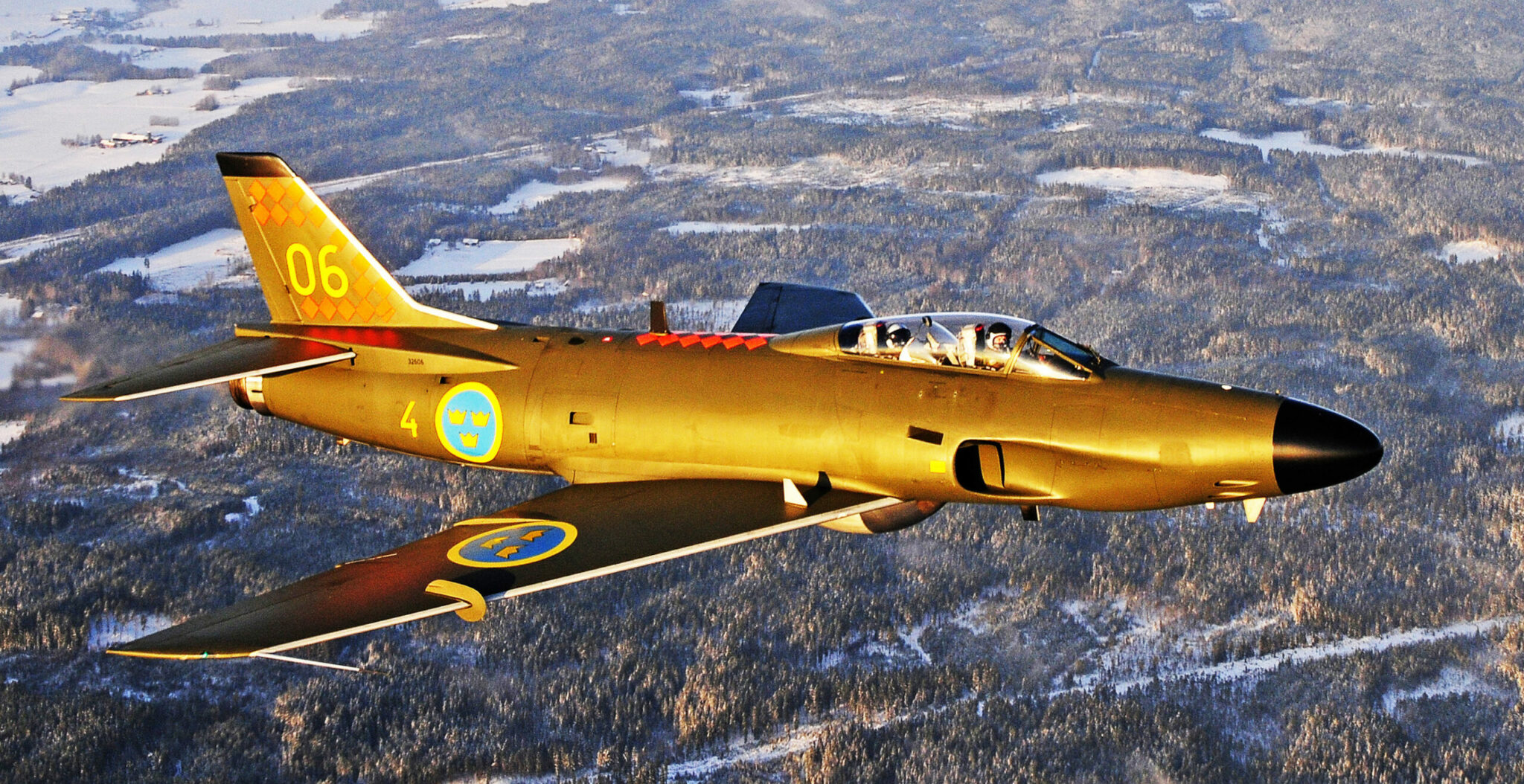
J 32B has been restored to flying condition, and it’s operated by the Swedish Air Force Historic Flight (SwAFHF) at F 7 Såtenäs. In order to be able to show the Lansen outside Sweden, it has been allocated civil registration SE-RMD, SE-RME and SE-RMF. No modifications were needed to get the Lansen flying as a civil aircraft, only a GPS a modern radio has been mounted in the cockpit to ease navigation and communication.
While the A32A was still in production, SAAB developed the night and all-weather fighter version, designated J 32B and also known as the Fighter Lansen. A total of 120 J32B were produced by SAAB during 158-60.
The J 32B was in many ways a second generation Lansen with more powerful engine and several upgraded systems optimized for the air defense role. These included RM 6A (license built version of Rolls Royce Avon Mk 47A), fitted with a Swedish developed afterburner (EBK 61). The RM 6A engine had approx. 40% increased thrust compared to the RM 5A. Due its much improved power plant the J 32B became known as the “Lansen Sport”. The first flight was 7 January 1957.
The aircraft could carry 4 IR homing Rb 24 ((AIM-9B Sidewinder). Unguided m/57 air-to-air rockets were also included in the J32B arsenal, carried in pods of 19 each on the underwing pylons, as well as 30 mm Aden m/55 cannons mounted internally in the nose with 90 rounds each.
A simple infrared search and track sensor (IRST) could be mounted under the left wing root near the leading edge. It was one of the first in Europe which enabled passive search and track of airborne targets. Together with the radar and the integrated sighting systems, which could be used with all types of weapons (guns, rockets and missiles) against both air and ground targets.
One of the J32 B was used for many years at test bed for ejection seat trials for the SAAB 35, 37 and SK60 aircraft systems, specially configured with an open rear cockpit. Ejection seats were fired at different altitudes, speeds and maneuvers. The result was recorded by cameras mounted on the aircraft.
The airframe was designated to withstand + 12G and -8G operations, but in normal service the limits were +8 G and -3 G. Service ceiling was 14 000 m.
The J 32B had a secondary surface to attack capability, and could be armed with the same rocket types as the A 32A. It was not able the deliver bombs.
In November 1969 a small Target Flying Group was formatted at F 15 Wing Söderhamn, equipped with six J 32B Lansen. This group were mainly serving as radar targets for the Air Force fighter units, and could also carry a podded ECM jamming system to provide electronic warfare training for the attacking force.
Some of these aircrafts were modified to J 32D target towing standard and J 32E electronic warfare standard. The J 32B were also used to measure radioactivity in the atmosphere. For this purpose, special air sampling pods could be mounted on the Lansen underwing pylons.
In addition to radioactive surveillance, the air sampling pods could be used for monitoring e.g. levels of volcanic ash in the atmosphere.
In 1968 three J 32B were transferred to the civil company (Swedair AB). They became based at Vidsel (northern Sweden) and were mainly tasked with target flying and airborne target towing on contract.
J32B SE-RMD (32542)
| First flight | 1959-03-13 |
| Delivered | 1959-05-13 |
Fin numbers:
- F 1 Västerås: 42
- F 12 Kalmar: 52
- F 4 Frösön: 42
- F 15 Söderhamn: 63
- F 3 Malmen: 23
- F 13 Bråvalla: 23
- F 16 Uppsala: 23
- F 3 Malmen: 23
- SwAFHF: 23
J32B SE-RME (32606)
| First flight | 1959-12-17 |
| Delivered | 1960-03-07 |
Fin numbers:
- F 1 Västerås: 06
- F 4 Frösön: 06
- F 3 Malmen: 34
- F 13 Bråvalla: 34
- F 16 Uppsala: 34
- F 4 Frösö: 06
- SwAFHF: 06
J32B SE-RMF (32620)
| First flight | 1960-03-14 |
| Delivered | 1960-05-18 |
Fin numbers:
- F 1 Västerås: 20
- FC Malmen: 21
- F 12 Kalmar: 20
- FC Malmen: 20
- F 1 Västerås: 20
- SwAFHF Fin 20.
This is the Lansen with the lowest number of flying hours about 1900 hours as of 2024-03-26.
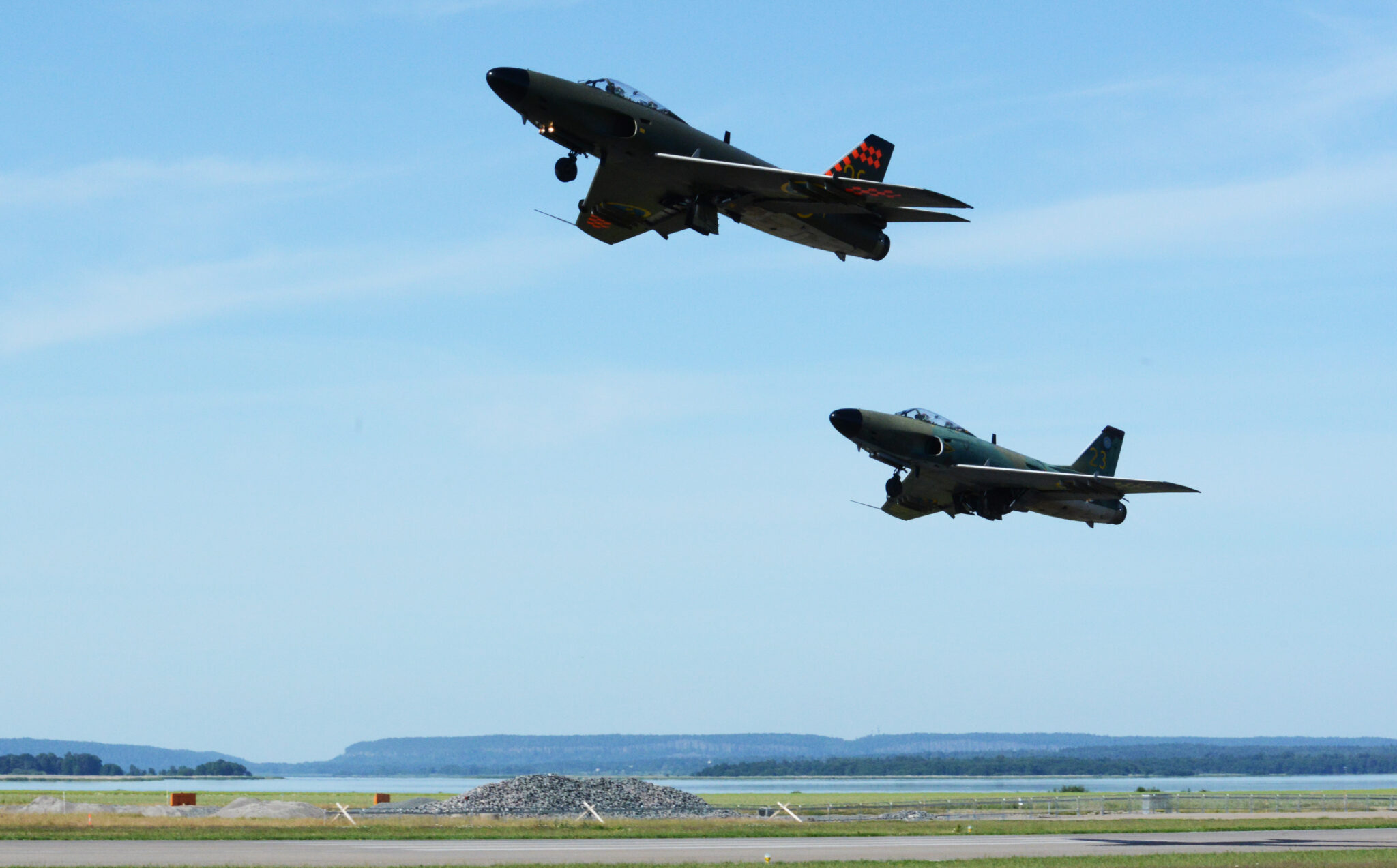
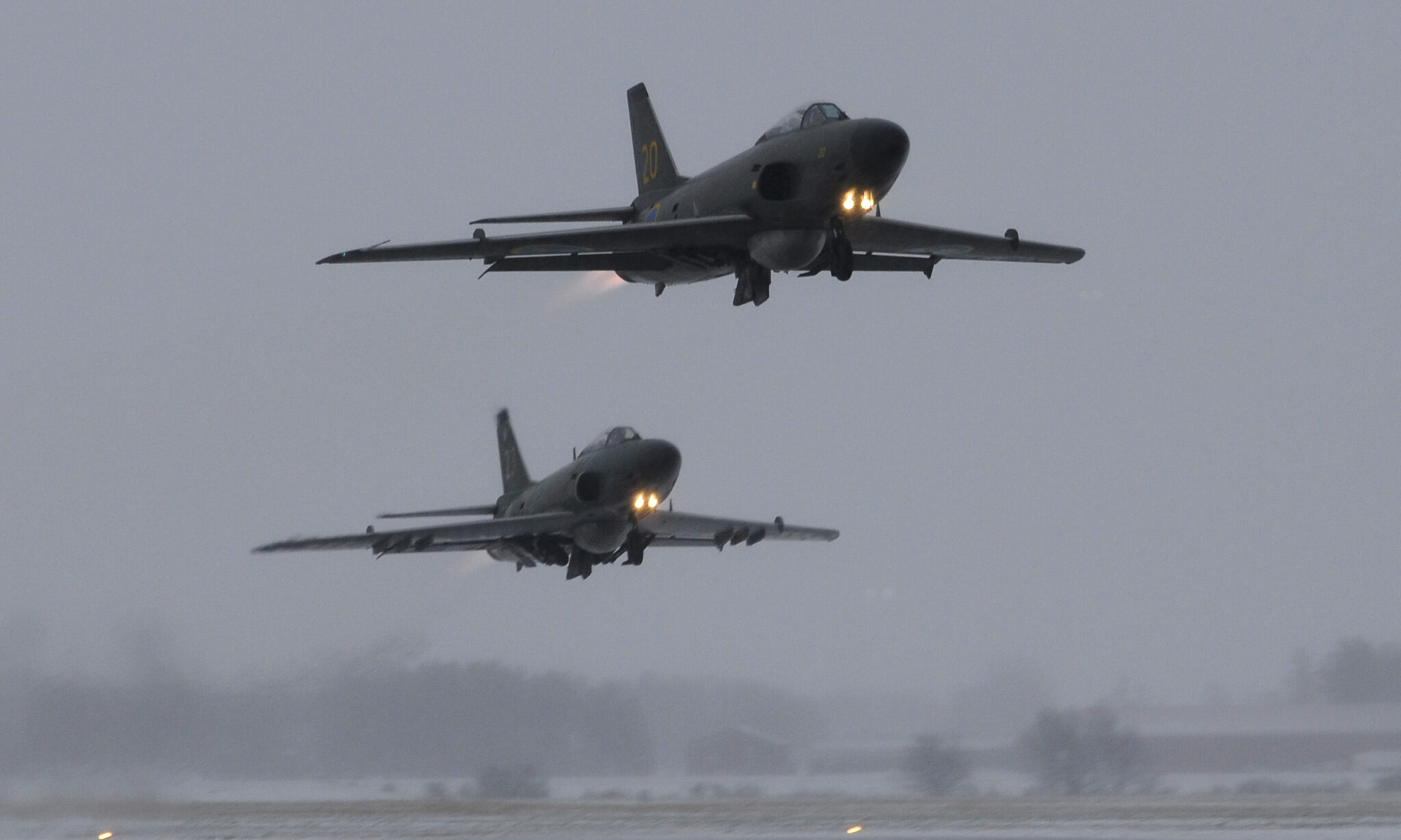
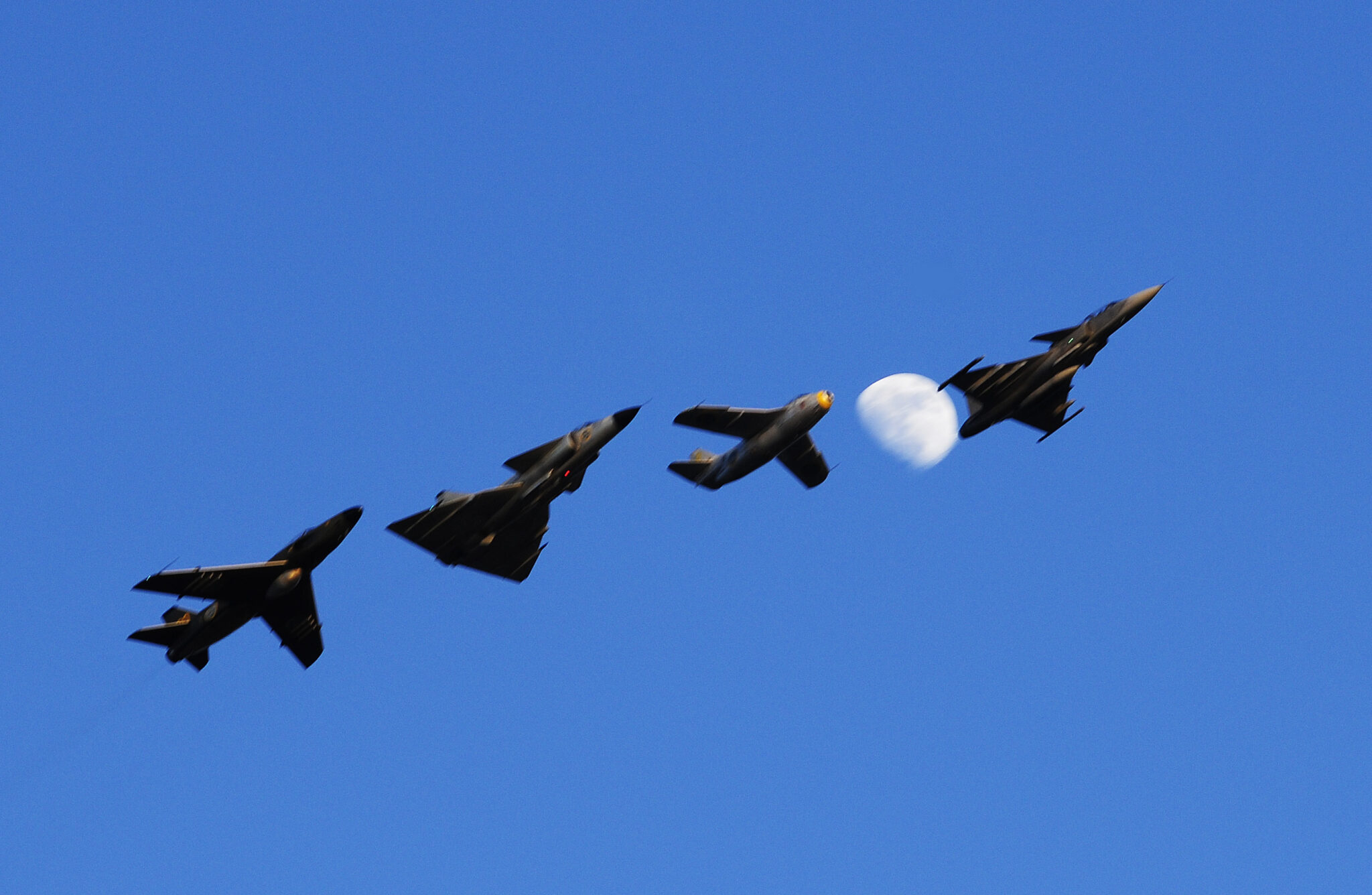
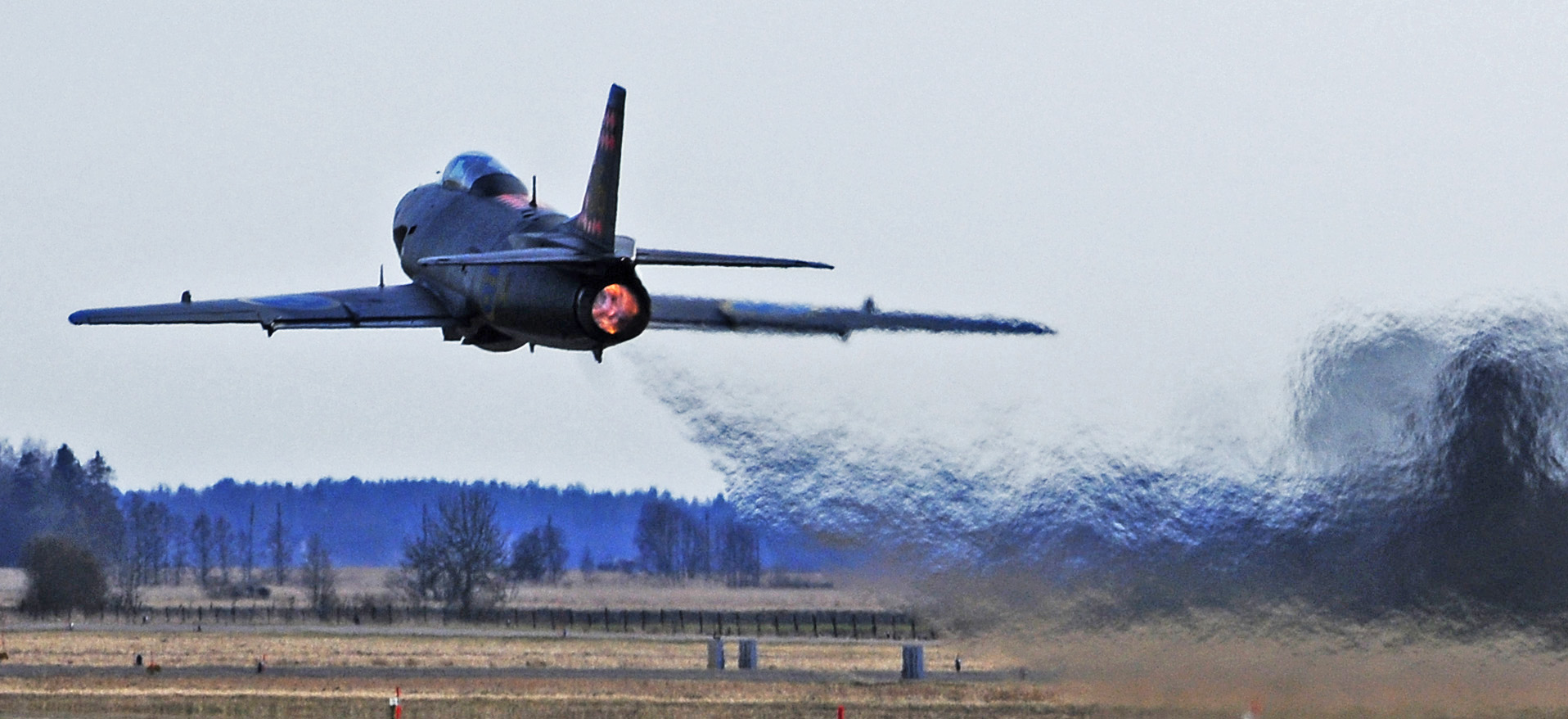

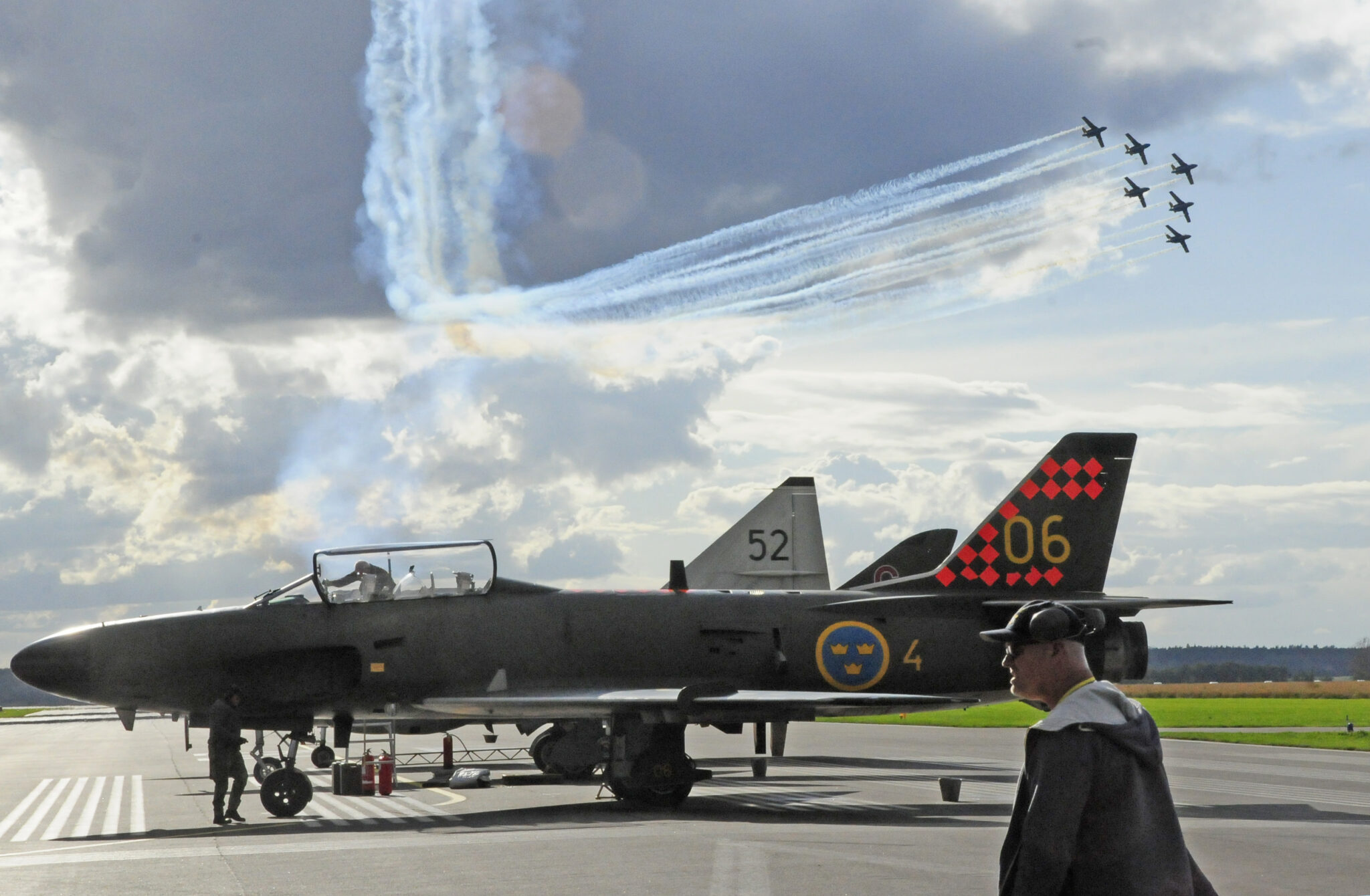
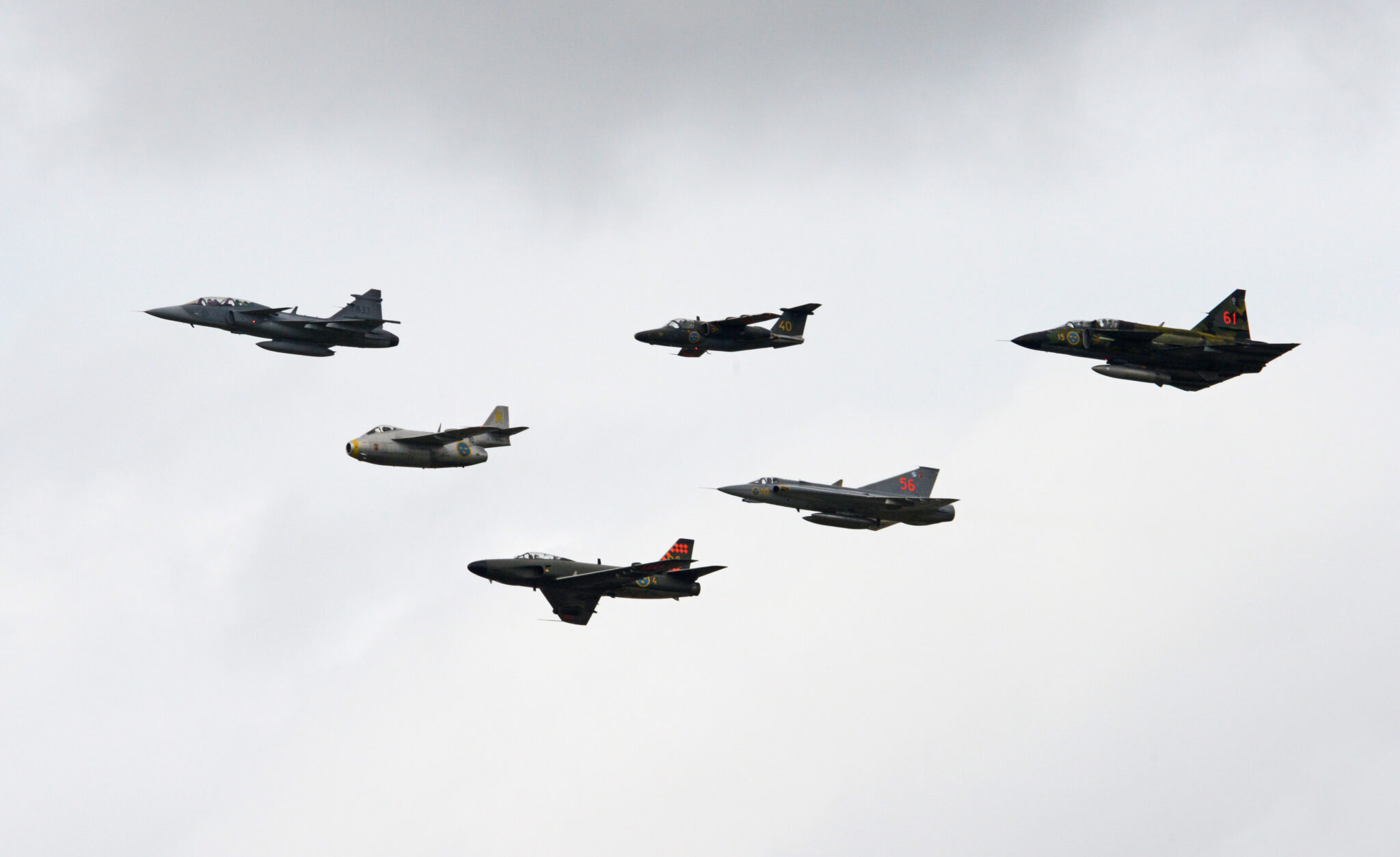
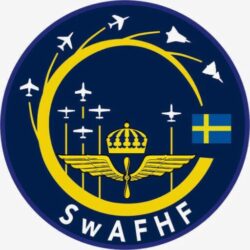
Du måste vara inloggad för att kunna skicka en kommentar.